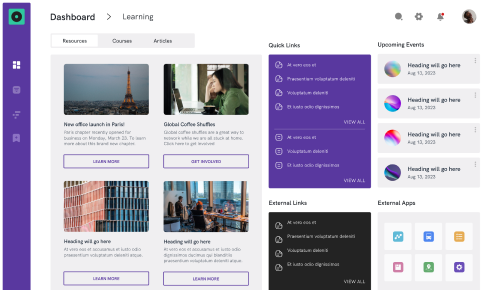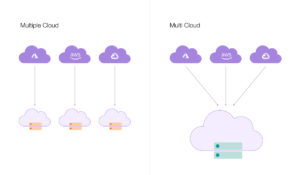Navigating the IT Frontier: Top Cloud, Data, and Edge Trends for 2023
 By Anita Srinivasan
By Anita Srinivasan
 8th November, 2023
8th November, 2023
Emerging IT trends
Edge computing solutions
Cloud computing trends
In the rapidly evolving world of technology, the infrastructure that supports our digital ecosystem is constantly changing. Hence, it becomes crucial to understand the trends that are shaping the future of cloud, data centre, and edge infrastructure. These trends not only impact businesses but also influence the way we live and work in the digital age.
To know more about the Technology Trends you should look for this year, please refer to our blog.
The future of cloud, data centre, and edge infrastructure is a dynamic and exciting space, driven by innovation, adaptation, and unprecedented growth. To navigate this evolving terrain effectively, it is essential to gain insight into the trends that are set to shape the technological landscape ahead.
Gartner, Inc. emphasized four trends that are set to influence cloud, data centre, and edge infrastructure in 2023. These trends are coming into focus as infrastructure and operations (I&O) teams adapt to facilitate modern technologies and work methodologies in a year characterized by economic uncertainty.
Let us explore four significant trends that are set to reshape the landscape this year and beyond.
Trend 1: Cloud Teams Will Optimize and Refactor Cloud Infrastructure
According to Gartner, the projection is that by 2027, 65% of application workloads will be in an optimal or cloud-ready state, an increase from the 45% reported in 2022.
While the use of the public cloud has become nearly ubiquitous, many deployments lack structure and are executed poorly. In the current year, infrastructure, and operations (I&O) teams have an opportunity to reassess poorly designed cloud infrastructure, intending to enhance its efficiency, resilience, and cost-effectiveness.
The primary focus of revamping cloud infrastructure should revolve around cost optimization by eliminating underutilized resources, prioritizing business resilience over service-level redundancy, utilizing cloud infrastructure as a means to mitigate supply chain disruptions, and modernizing the overall infrastructure.
For detailed insights on Cloud Computing and Migration Strategies, please download this free whitepaper resource.
Trend 2: New Application Architectures Will Demand New Kinds of Infrastructure
According to Gartner’s projections, it is anticipated that by 2026, approximately 15% of on-premises production workloads will be containerized, marking a substantial increase from the less than 5% reported in 2022.
Infrastructure and Operations (I&O) teams face an ongoing challenge in adapting to evolving and expanding demands, driven by the need for new types of infrastructure. These include edge infrastructure for data-intensive use cases, non-x86 architectures tailored for specialized workloads, serverless edge architectures, and the integration of 5G mobile services.
I&O professionals must approach alternative options with a discerning eye, emphasizing their capacity to effectively manage, integrate, and evolve within the constraints of limited time, talent, and resources.
As Paul Delory, VP Analyst at Gartner, points out, “Don’t revert to traditional methods or solutions solely based on past success. Challenging periods are opportunities to innovate and discover fresh solutions that can meet the evolving demands of businesses.”
For a detailed understanding of Cloud Architecture, please check out our informative blog.
Trend 3: Data Center Teams Will Adopt Cloud Principles On-Premises
As per Gartner’s forecasts, by the year 2027, approximately 35% of data centre infrastructure will be administered through a cloud-based control plane, marking a significant increase from the less than 10% reported in 2022.
Data centres are experiencing a size reduction and are shifting towards platform-based co-location providers. This, when combined with emerging as-a-service models for physical infrastructure, has the potential to introduce cloud-like service-oriented approaches and economic frameworks to on-premises infrastructure.
In the current year, Infrastructure and Operations (I&O) professionals should concentrate on three key strategies namely constructing cloud-native infrastructure within the data centre, transferring workloads from self-owned facilities to co-location facilities or edge locations, and embracing as-a-service models for physical infrastructure. These actions are pivotal for staying ahead in the rapidly evolving IT landscape.
Trend 4: Successful Organizations Will Make Skills Growth Their Highest Priority
According to Gartner’s projections, it is anticipated that by 2027, approximately 60% of data centre infrastructure teams will possess the relevant skills in automation and cloud, signifying a substantial increase from the 30% reported in 2022.
The main hindrance to infrastructure modernization initiatives continues to be the scarcity of skilled personnel. Many organizations encounter difficulties in hiring external talent to bridge these skill gaps. To thrive in this environment, IT organizations must prioritize the organic growth of skills.
In the current year, Infrastructure and Operations (I&O) leaders must elevate skills development to the top of their agenda. They should actively encourage I&O professionals to assume new roles, such as site reliability engineers or serve as subject matter expert consultants for developer teams and business units.
Investing in skills development is crucial for staying competitive and meeting the evolving demands of the IT landscape.
The acceleration of technology and the increasing demands of a digital society have necessitated a shift in our approach to infrastructure. The challenges of 2023 are, in fact, opportunities for innovation, adaptation, and growth. In a world that is becoming more interconnected and data-driven every day, staying ahead of the curve is essential.
With Gartner’s projections in mind and the ever-increasing pace of change, it is crucial to emphasize the importance of continuous skills development.
As IT organizations and professionals navigate these trends, upskilling and embracing new roles will be pivotal to success.
In 2023, the future of digital infrastructure is calling us to adapt, innovate, and lead with resilience. The journey may be challenging, but the rewards are transformative.
As we navigate this exciting world of cloud, data centre, and edge infrastructure, we must remember that knowledge and proactive adaptation will be our guiding force.
We must stay informed, be agile, and keep a watchful eye on the horizon, for the world of technology never stops evolving.
The trends we have explored are just the beginning, and there is no doubt that the road ahead will be filled with exciting opportunities and uncharted territories. We must collaboratively embrace the future with confidence, and it will be our greatest ally in the years to come.
If you would like to understand our Cloud Computing and Cloud Migration approaches and strategies, please visit our website or book a free consultation with our Cloud Computing experts today.
References:
Gartner Says Four Trends Are Shaping the Future of Cloud, Data Center, and Edge Infrastructure. (Gartner)




























